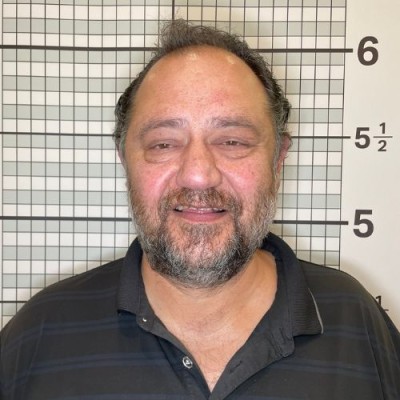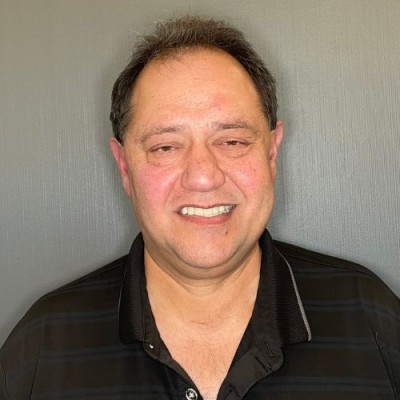Temporomandibular joint disorders (sometimes called just TMJ or TMD) affect millions of Americans daily. Although many cases of TMJ disorders resolve on their own, some require professional care to treat. The source of these disorders is the jaw, but their symptoms can be wide-ranging and might be felt in your head, neck, fingers, and back. These symptoms can range from annoying to disruptive to disabling in their severity.
Fortunately, our Park Ridge TMJ dentist, Dr. Mark Kuchta, is here to help. A member of the International College of Craniomandibular Orthopedics, Dr. Kuchta is well-trained in treating TMD and provides reliable, effective treatment options to help relieve the associated symptoms. This is one of the ways that we use oral healthcare to significantly improve your overall quality of life.
What Is TMJ Disorder?
The temporomandibular joint connects the lower jaw to the skull. It’s one of the most complicated joints in the body, since it allows many complex movements. You can move your jaw up and down, forward and back, side to side, and even tilt left and right. In addition, when functioning properly, the two joints must work harmoniously together.
A disorder is caused when the joints and muscles stop functioning correctly. There are many potential causes of this, including:
– Jaw trauma
– Jaw whiplash
– Crooked teeth
– Bad habits (using teeth as tools, chewing nonfood objects, etc.)
– Unhealthy development of the jaw
– Teeth clenching and grinding
– Jaw trauma
– Jaw whiplash
– Crooked teeth
– Unhealthy development of the jaw
– Bad habits (using teeth as tools, chewing nonfood objects, etc.)
– Teeth clenching and grinding
Other times, we might not know what caused a TMJ disorder.
Symptoms of TMJ Disorder
TMJ disorders can be hard to diagnose because they cause many different symptoms, and these symptoms can be so disparate that people and their doctors may not realize that they’re linked.
Some of the symptoms people report with TMJ include:
– Headaches
– Neck pain
– Facial pain
– Excessive tooth wear
– Toothaches
– Ear pain
– Ear fullness
– Ringing in the ears (tinnitus)
– Hearing loss
– Vertigo
– Tingling and numbness in the face, neck, jaw, arms, or fingers
– Jaw pain
– Jaw sounds (clicking, popping, and grinding)
– Irregular jaw motion
– Limited jaw motion
– Locked jaw
– Jaw pain
– Jaw sounds (clicking, popping, and grinding)
– Irregular jaw motion
– Limited jaw motion
– Locked jaw
– Headaches
– Neck pain
– Facial pain
– Excessive tooth wear
– Toothaches
– Ear pain
– Ear fullness
– Ringing in the ears (tinnitus)
– Hearing loss
– Vertigo
– Tingling and numbness in the face, neck, jaw, arms, or fingers
These symptoms might seem hard to link together, but neuromuscular dentistry explains how TMJ disorder creates them all.
Why Neuromuscular Dentistry Matters in TMD Treatment
TMD is more than just a jaw issue—it involves muscles, nerves, posture, and how your bite aligns. Dr. Kuchta takes a neuromuscular approach to TMJ disorder, focusing not just on your teeth and joints but also on how your entire jaw system functions.


At Complete Health Dentistry of Park Ridge, Dr. Kuchta uses the K7 Evaluation System, a sophisticated diagnostic tool that tracks real-time jaw movement, muscle activity, and bite force. This advanced technology allows us to:
- Measure muscle tension and fatigue
- Pinpoint imbalances in jaw movement
- Determine the optimal jaw position for long-term relief
Because very few practices in the region offer K7 diagnostics, patients benefit from a uniquely precise and personalized treatment plan based on measurable data, not guesswork.
TMJ Treatment Results
Patients Share Their Experiences
“Dr. Kuchta is the definition of a professional and caring dentist. He took the time to explain every step of the process to me and answer all my questions.
Prior to the Myoaligner treatment, I suffered frequent and unpredictable nerve, jaw, and facial pain, as well as severe headaches and exhaustion. This treatment experience was truly life-changing for me.”
“Before starting treatment, I was experiencing frequent headaches, shoulder pain, general soreness, and an annoying shooshing noise in my ear. After starting treatment with the myoaligner orthotic, I felt significantly better within just one month.
Dr. Kuchta thoroughly explained the treatment process at each step and was very gentle throughout. I can honestly say that after the treatment, I no longer wake up with headaches, and the shooshing noise and hip pain are gone. I now feel a great sense of overall wellness.”
“Before seeking treatment, I consistently woke up feeling tired, often restless throughout the night, or unable to fall back asleep after waking.
I found Dr. Kuchta to be very thorough, and I appreciated that he explained each step of the process. The appliance itself is very comfortable. I immediately noticed an improvement in my breathing while wearing it and have been waking up feeling more refreshed… I no longer feel the need to nap during the day.”
“A fantastic experience with the kindest people and most knowledgeable dentist I’ve ever been to! Would highly recommend to anyone looking for a dentist who also specializes in TMD.”
TMJ Diagnosis
First, Dr. Kuchta will perform a detailed medical history to see what symptoms you have and what might have led to a TMJ disorder. Next, he’ll perform a physical examination to identify the nature of and source of your pain. This may include touching the sore muscles as well as potential trigger points. In some cases, Dr. Kuchta might use CBCT to look in detail at the structure of your temporomandibular joints to find displacement or damage not visible during an external examination.
To evaluate muscle function and determine your jaw’s natural resting position, Dr. Kuchta may utilize one or more neuromuscular diagnostic tools, like TENS (transcutaneous electrical nerve stimulation), Occlusense, and the K7 Evaluation System. TENS therapy helps reduce clenching habits by using mild electrical pulses, Occlusense and the K7 System help record and evaluate things like muscle activity, jaw movement, joint sounds, and bite force distribution.
As part of a personalized treatment plan, Dr. Kuchta may recommend a Myoaligner orthotic—a custom-made appliance designed to realign the jaw and balance bite forces. By guiding the jaw into a more physiologic position, the Myoaligner can help reduce muscle tension, improve function, and promote long-term relief from TMJ-related discomfort.


Before

After - w/Myoaligner
What Are TMJ Treatment Options?
There are many TMJ treatment options, but which one is best for you will depend on the nature of your TMD. These include:
Periodic TENS Treatment: For some people, the relaxation provided by TENS treatments can eliminate symptoms.
Injectable Medications: In other cases, injectable medications such as muscle relaxants or pain medications can relieve TMJ symptoms.
Bite Splint: For people with recurring TMD, the problem may be their bite position. Holding their jaw in a stressful position can cause the return of TMJ symptoms. To prevent this, Dr. Kuchta will order a bite splint that holds your jaw in a healthy position. With K7 data and neuromuscular measurements, we ensure that your bite splint is calibrated for your ideal jaw position.
Full Mouth Reconstruction: Once we determine your healthy bite position and confirm it through successful treatment with a bite splint, we might recommend full mouth reconstruction. Sometimes called Phase 2 TMJ Treatment, this procedure reshapes your teeth so that they will hold your jaw in the same position as the bite splint. You get the results of wearing a bite sprint 24/7 without actually having to wear it.
Get Relief from TMJ Symptoms
Are you affected by symptoms related to TMD? If so, our park ridge dentist team is eager to provide quick relief to your pain. Contact our dental clinic in Park Ridge at (847) 696-3240 for more information regarding treatment options today, or use the online contact form to the right set up your next consultation with a team member.








